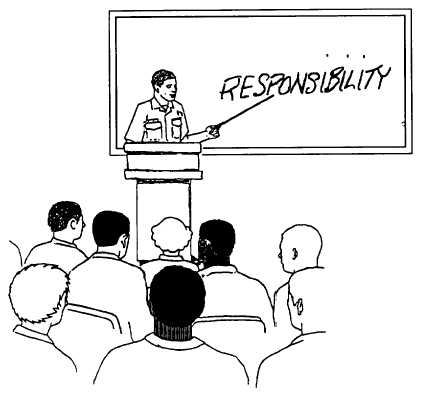| |
3. Acknowledge their achievements.
Recognizing Ability
To recognize abilities is to recognize the individual.
If we were to randomly select a Navy rating and then
from that rating select a rate, these people would be as
different in their abilities as they are in appearance.
Matching job requirements to individual abilities is just
good management. This job match should not be looked
upon as being permanent, but as a logical beginning for
training.
Setting Goals
“This instruction just came in. I want you to study
it.” This supervisor has given the team members one
reason they should read the instruction: “I want. . .”
This approach gives them no motivation to read it; they
do not know how, why, or when to use the instruction?
A different approach would provide more motivation:
“We just received this instruction covering new pay
procedures that will go into effect the first of the month.
I’ll route it around so that all of you can read it. Next
week, we will have a training session on the contents.”
Using this approach, the supervisor has told them how,
why and when.
Goals must be meaningful and realistic if team
members are to consider them seriously. Ideally, goals
should be set just above the level that the person is
currently achieving. If they are too low, there is no
challenge—the goal has already been met. If they are
too high, the member is likely to reject them. If failure
is certain, why go to the trouble of trying?
Goals may be set for individuals or for the team.
They may be set as a part of, or in connection with, the
division training program.
Acknowledging Achievements
Rare, indeed, is the person who will conscientiously
do a job, day after day, without some recognition.
Members normally receive recognition for performance
at the outstanding performance level. However, those
who perform considerably below the level of
outstanding also need to receive recognition. Make an
effort to recognize those personnel who perform at a less
notable level. The following are some examples of the
positive effects of such recognition:
The new member is just learning the job. Recog-
nition of achievement may provide a needed
boost toward increased ability.
4-7
|

